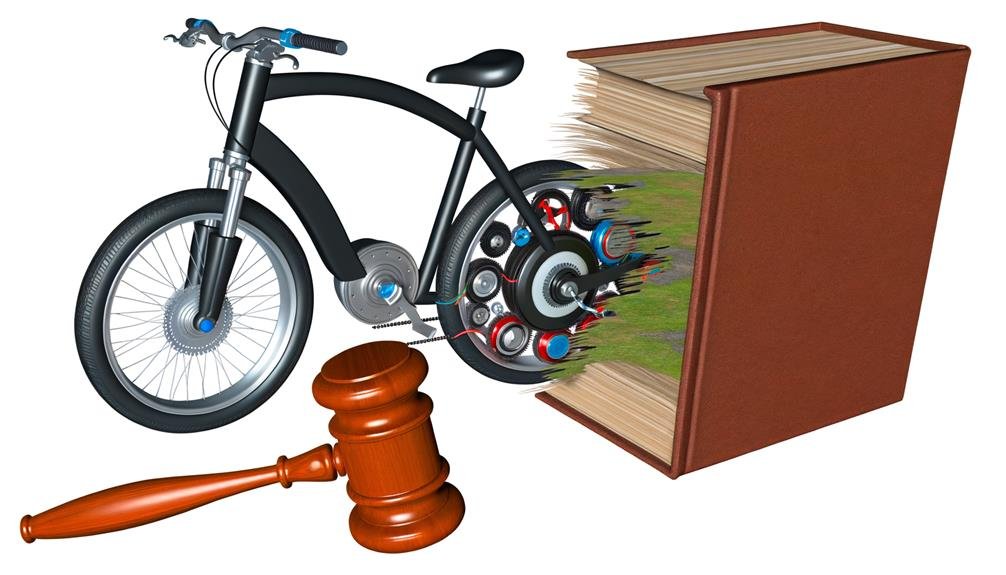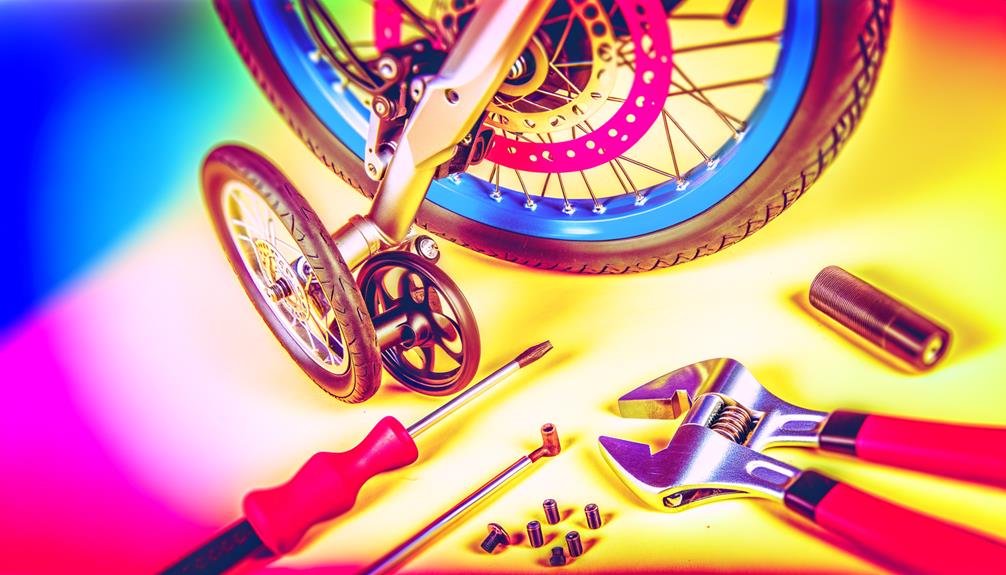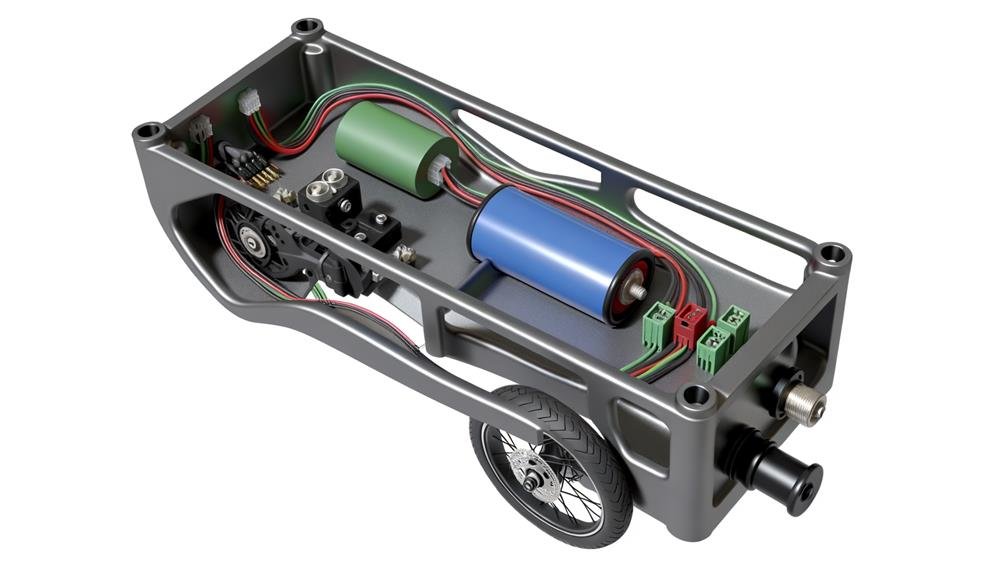Charles Miller is a veteran bike enthusiast with over 12 years of experience dealing with bikes as a mechanic. Despite immense love and expertise for...
We've all seen those cyclists zipping past us on the street, effortlessly tackling hills and long distances with the help of an electric bike.
But what if we told you that your trusty old bicycle could be transformed into one of these high-tech rides? Indeed, with the rise of electric bike conversion kits on the market, it's entirely possible to give your bike an electric boost.
But how does this process work, what's the cost, and what are the potential drawbacks? Let's explore this intriguing possibility further.
Key Takeaways
- Consider the compatibility, power output, and quality of a conversion kit before making a decision to ensure a successful and confident ride.
- Be aware of the cost and hidden conversion costs, such as professional fitting services and potential voided warranties, when transforming your bike into an electric one.
- Evaluate the quality of the conversion kit's components, customer reviews, and brand reputation to ensure a successful conversion.
- Understand the legal considerations, including local laws and warranty implications, before proceeding with a bike conversion.
Choosing Your Electric Bike Conversion Kit
When it comes to choosing your electric bike conversion kit, it's essential we pay close attention to the kit's compatibility with your bike, the power output, and the quality of the components.
The first step in transforming your bike to electric involves picking the right e-bike conversion kits. Compatibility is key. Not all conversion kits fit all bike types, so we really need to ensure the kit we choose is a perfect match for our bike's specifications.
It's also about the power output. We're looking to convert a bike into an electric powerhouse, and that requires a kit with a motor that matches our biking habits and terrain. More power output means more speed, but it might also drain the battery faster, so it's all about finding that sweet spot.
Lastly, quality matters. We don't want to compromise our bike's integrity with subpar components. The motor, battery, and other parts of the electric bike conversion kit should be durable and reliable, ensuring our bike's transformation isn't just temporary.
When we're part of the electric biking community, we want to ride with pride, confidently knowing we made the best choice in our conversion journey.
Step-By-Step Conversion Process
Let's dive right into the step-by-step conversion process, starting with selecting a conversion kit that's compatible with your bike's frame measurements, budget, motor location, battery type, and wattage rating. The e-bike conversion kit typically includes a motor and a battery. Electric bike conversion kits like the Bafang front hub motor or the Swytch system are popular choices.
| Step | Item | Description |
|---|---|---|
| 1 | Selecting Conversion Kit | Compatible with your current bike, consider motor location, battery type, and wattage |
| 2 | Installation | Follow the instructions, ensure wiring, braking system, and nuts are properly installed |
| 3 | Checking the Setup | Ensure your regular bike has now a fully functioning mid-drive system and pedal assist |
Cost of Converting Traditional Bike

When we're talking about converting a traditional bike into an electric one, we can't ignore the costs involved.
Conversion kits themselves range from $250 to $750, and that's not taking into account potential additional expenses like professional fitting services or a separate battery purchase.
We'll also touch on hidden costs, such as voided warranties and the value comparison between conversion and buying a brand-new e-bike.
Conversion Kit Prices
Diving into the cost aspect, conversion kit prices typically fall between $250 and $750, making it a cost-effective method to transform a traditional bike into an electric one.
To help you visualize, we'll break down the main electric bike components:
- Hub: This is essentially the heart of your drive e-bike conversion and could be either a front wheel or rear wheel hub.
- Battery and controller: These vital components power your ride, with prices varying based on capacity and technology.
- Pedal assist sensor: This sensor triggers the motor when you pedal, enhancing your ride experience.
- Installation costs: Some of the best electric bike conversion kits may include professional fitting services, adding to the total price.
Hidden Conversion Costs
While considering the initial outlay for an e-bike conversion kit, it's crucial to also take into account the hidden costs associated with transforming a traditional bike into an electric one.
Upgrading your conventional bike into one of the best electric bikes by adding a motor requires more than just the initial e-bike conversion kit. You may need to upgrade your front or rear wheel, invest in a new battery pack, or even replace the existing motor and battery. The inclusion of a mid-drive motor might also necessitate further modifications.
The new electric setup might demand professional installation if you lack the necessary skills. Remember, converting the bike you already have may incur unexpected costs, so plan wisely.
Evaluating Conversion Kit Quality
In our quest to transform our standard bike into an electric one, it's crucial we scrutinize the conversion kit quality we're considering. Evaluating the quality is a detailed process and involves consideration of:
- Compatibility: The conversion kit must fit your normal bike, accommodating its frame, forks, rear stays, and wheel size.
- Components' Quality: It's essential to assess the quality of the motor, drive system, and battery included. For instance, a Mid-Drive Kit like the TongSheng mid-drive or Bafang mid-drive is known for its efficiency and durability.
- Reviews and Brand Reputation: Gauge the quality from customer reviews and the brand's reputation. This helps anticipate the electric assistance and overall performance of your new e-bike.
- Installation Ease: Consider how simple it's to convert your bike. A good kit should have a clear manual and require minimal additional tools.
Legal Considerations for E-Bikes

Before we delve into the nitty-gritty mechanics of turning our bike into an e-bike, it's crucial we're fully aware of the legal considerations that come with this transformation. When considering the best e-bike conversion, it's not just about adding a motor or ensuring the system is compatible with your wheel size. It's about understanding the legal landscape.
In the table below, we've outlined some key legal considerations for e-bikes:
| Consideration | Detail | Relevance |
|---|---|---|
| Speed & Power Limitations | Local laws often dictate speed and power limits for e-bikes | Ensure your type of conversion doesn't exceed these. |
| Conversion Kits Legality | Not all kits are legal everywhere | Check before buying an electric bike conversion kit. |
| Professional Fitting | Bike shops ensure legal compliance | They install Mid Drive or other motors without voiding rights reserved by the manufacturer. |
| Warranty | Conversion might void warranty | Check with your England and Wales company before proceeding. |
E-Bike Conversion: Pros and Cons
As we turn our attention to the pros and cons of e-bike conversion, it's crucial to consider both the benefits and potential downsides.
On one hand, conversion kits can offer a cost-effective way to enhance your existing bike, extending its use and broadening your cycling horizons.
On the other hand, there can be challenges such as less seamless integration and alterations in the riding experience.
Benefits of Conversion
Transforming a standard bicycle into an electric one, using an e-bike conversion kit, offers an affordable, personalized, and eco-friendly solution for riders seeking the benefits of electric assistance without losing the comfort and familiarity of their existing bike.
Among the benefits, we can list:
- Power Output: A kit like the Rubbee X, for instance, can increase power output to 120 watts, making your bike faster.
- Innovative Features: Incorporating regenerative braking, hub motors, and friction drive technology adds value to your ride.
- Wheel Options: Conversion kits allow you to add electric power to either the rear tyre or to a new wheel, offering flexibility.
- Battery Inclusion: Most kits include a battery, eliminating the need for separate purchase.
In essence, we're talking about a unique, tailor-made electric biking experience.
Potential Conversion Downsides
While the benefits of converting a traditional bike into an electric one are enticing, it's equally important to consider some potential drawbacks.
The extra weight of the system, particularly where the motor sits at the rear or in the bottom bracket, could impact ride quality by significantly altering your bike's balance.
Moreover, you'll need a battery, which can have a finite battery life and may need frequent recharging. This could affect your pedalling rather than helping it, especially on long rides.
Additionally, customer support might be limited for DIY conversions, and warranties may not cover these modifications.
Lastly, your bike's original components mightn't be designed to handle the additional stress of an electric conversion, potentially leading to premature wear and tear.
Frequently Asked Questions
How Much Does It Cost to Convert a Bicycle to Electric?
We've found conversion kits pricing varies greatly. DIY conversion costs can be cheaper, but consider hidden conversion costs. Budgeting for conversion is essential, while luxury conversion costs are higher. Reducing conversion expenses is possible with careful planning.
Can a Regular Bike Be Turned Into an Electric Bike?
Yes, we can turn a regular bike into an electric one using DIY kits. This conversion process involves choosing the right battery, deciding on motor placement, considering legalities, and maintaining the bike post conversion.
Is It Worth Converting a Bike to Electric?
Yes, we believe it's worthwhile. We've experienced increased riding comfort, cycling benefits, and sustainability. Despite conversion challenges, DIY kits provide good conversion efficiency. Electric maintenance and battery life are manageable, and speed limitations are reasonable.
Can I Convert My Cycle to Electric?
Yes, we can convert our cycle to electric. We'd need a conversion kit, consider motor placement, battery options and manage DIY challenges. The process improves electric efficiency, but requires safety measures and maintenance.
Conclusion
In conclusion, converting your traditional bike into an e-bike can be a rewarding and cost-effective endeavor. It's not just about saving pennies, it's about making them count.
Remember, the devil is in the details, so meticulous planning and evaluation of conversion kits is crucial.
And, while e-bikes bring about a wave of benefits, it's essential to consider the legal aspects.
With careful thought and preparation, you can transform your regular ride into an efficient, electric machine.

Charles Miller is a veteran bike enthusiast with over 12 years of experience dealing with bikes as a mechanic. Despite immense love and expertise for his Tacoma, he rides his Trek Ebike more. Anytime you meet him, you’ll either hear him talking about Bikes, or writing about all things bikes and cars on this blog.
More Posts


